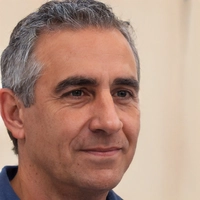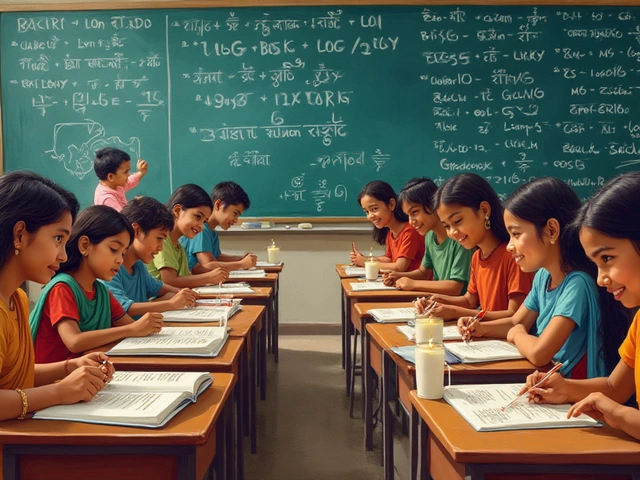
Hardest Math Exam: Which Test Breaks the Strongest Minds?
Think you’ve struggled with a tricky math test? The world’s hardest math exams make even top students sweat buckets. These tests aren’t about calculating quickly or memorizing formulas—they force you to think in ways nobody’s taught you before. It’s like facing puzzles designed by math’s biggest masterminds.
Why do these exams matter so much? For some, it’s all about bragging rights, but for others, cracking one of these monsters opens doors to the globe’s top universities and math circles. We’re talking competitions where just solving one question sometimes means you’re in the top third.
So, what does it actually take to survive? A crazy mix of creative thinking, nerves of steel, and the willingness to stare at a problem for hours without quitting. You’ll meet math olympiads full of prodigies and college exams that leave even PhDs scratching their heads. Whether you’re dreaming of trying one or just curious how extreme math gets, there’s a lot more going on than most people realize.
- Defining 'Hard' in Math Exams
- The Putnam Exam: America’s Mount Everest
- International Mathematical Olympiad: Where Teens Battle Geniuses
- Other Notorious Challengers—Honorable Mentions
- Tips for Tackling Monster Math Contests
Defining 'Hard' in Math Exams
When someone calls an exam "the hardest math exam," what does that even mean? It’s not just about long equations or confusing graphs. Usually, the toughest exams throw problems at you that go way beyond your regular school math. These questions are weird, creative, and often leave you stumped, even if you’re used to getting A’s.
Tough math exams measure different things than your average classroom test. They're looking for deep problem-solving, logic that bends the mind, and, sometimes, the guts to keep going when a problem has no obvious starting point. For example, contests like the hardest math exam often throw in problems you'd never see in textbooks, forcing you to invent your own methods as you go.
So, what actually makes an exam 'hard'? Check out these factors that raise the difficulty bar:
- Creativity required: You can’t just plug numbers into a formula. You need to come up with wild ideas.
- Time pressure: There’s never enough time. These exams are famous for packing insane questions into short windows.
- Low scores, even for top students: In the William Lowell Putnam exam, the median score is often 0 out of 120. Seriously—most people don’t even solve one question fully.
- Original questions: Problems are custom-written, not recycled from any textbook. They often blend several areas of math together.
Here’s a quick look at what scoring actually looks like on some of the hardest exams out there:
| Exam | Score Range | Median Score |
|---|---|---|
| Putnam Exam (USA) | 0 - 120 | 0 or 1 |
| International Mathematical Olympiad (IMO) | 0 - 42 | 15 - 20 |
| All-Russian Olympiad | 0 - 40 | 13 - 18 |
If you’re sitting these tests, you know you might only get a question or two out of twelve. And that’s if you’re really good. These contests sort out not just who knows math, but who can push through the toughest, strangest challenges out there.
The Putnam Exam: America’s Mount Everest
If you ask anyone in the USA about the hardest math exam, most will point straight at the William Lowell Putnam Mathematical Competition. Just called "the Putnam" by most folks, this is the college-level math contest every math major has heard nightmares about. It started in 1938, and it’s been handing out headaches and bragging rights ever since.
The Putnam isn’t just tough – it’s legendary. Every December, thousands of undergrads in the US and Canada block off six hours for what’s basically a brain marathon: 12 problems, split across two blocks of 3 hours each. The catch? Even just solving one or two questions puts you ahead of most people taking the test.
| Year | Number of Participants | Median Score (out of 120) | Max Prize |
|---|---|---|---|
| 2022 | 3,433 | 0 | $2,500 |
| 2021 | 2,975 | 2 | $2,500 |
See those median scores? In 2022, the median was actually zero out of 120. That means if you got a single point, you already beat half the crowd. It sounds brutal – and it is, but that’s totally the point. Questions cover everything from calculus to combinatorics, but they’re never straightforward. You need slick tricks, wild ideas, and nerves of steel to make a dent.
Why do people line up to take it anyway? For starters, top scorers get their names flashed to grad schools and recruiters across North America. Winners split cash prizes, and their schools make out with extra money too. And honestly, for math folks, solving a Putnam problem feels like lifting a car – it’s that rare rush of everything making sense after hours spent feeling dumb.
- If you ever want to give it a shot, practice with old tests. The format doesn’t change much, and seeing past problems is the best way to learn the Putnam’s game.
- Don’t go in expecting to ace it. Most who try walk out feeling like they’ve been chewed up and spat out, but that’s normal.
- Work with others. Study groups can teach you wild new tricks you’d never have dreamed up alone.
For a lot of math majors, the Putnam isn’t about winning – it’s about testing your limits and getting a taste of how deep math can get. It’s definitely not for the faint of heart, but if you’re into math, it’s the ultimate challenge on this side of the Atlantic.

International Mathematical Olympiad: Where Teens Battle Geniuses
The International Mathematical Olympiad (IMO) isn’t just a math test—it’s the math world’s ultimate showdown for high schoolers. Started back in 1959 in Romania, the IMO has blown up into a global event, pulling in teams from over 100 countries every year. This competition is where math prodigies collide, each one trying to outsmart the brightest students from around the world.
So, what does hardest math exam look like for teenagers? Each team selects a handful of students—usually between four and six—after months, sometimes years, of local and national contests. Once at the IMO, participants face two days of brain-busting questions. Each day, you get three problems to solve in four and a half hours. These aren’t the kind of problems you’ll find in any textbook. Picture having to invent your own solutions from scratch, with zero step-by-step instructions.
The problems cover four classic areas: algebra, geometry, number theory, and combinatorics. Solving even one of these can take a prodigy all day. The difficulty is legendary. In some years, lots of students end up with a score of zero—despite being geniuses in their own countries.
| Year | Host Country | Participating Countries | Median Score (out of 42) |
|---|---|---|---|
| 2019 | United Kingdom | 112 | 10 |
| 2022 | Norway | 104 | 13 |
| 2023 | Japan | 112 | 15 |
But here’s the cool part: the IMO isn’t just about medals. A medal at this level gets you noticed by top universities like MIT, Cambridge, and Stanford. Some universities even give winners a free pass on their admissions tests. That’s how much respect this contest commands.
If you ever get inspired to try out, start with local math olympiads and build from there. The best do loads of old IMO problems and connect with other math fans to bounce ideas off each other. For most, the experience is rough but unforgettable—and it proves, more than anything, that math isn’t just about the answer, but the wild journey it takes to get there.
Other Notorious Challengers—Honorable Mentions
Sure, the Putnam and International Mathematical Olympiad grab the spotlight, but the world of competitive math is packed with tough tests that deserve respect. If you're into real challenges, these exams are worth knowing about.
First up, the Asian Pacific Mathematics Olympiad (APMO) goes beyond just hard questions—it’s tight on time and you’re up against the best in Asia-Pacific. The questions can catch even seasoned competitors off guard because they demand both creativity and lightning-fast logic.
Then there’s the Russian Mathematical Olympiad. It’s famous for deep, quirky problems. The finals see students tackling abstract proofs that wouldn’t look out of place in high-level math journals. Some past questions have even ended up as published research problems.
Don’t forget about the European Girls’ Mathematical Olympiad (EGMO). While some might think it’s easier, EGMO keeps the bar high—the problems are drawn from the same pool as the International Mathematical Olympiad and often require clever approaches.
Another major player is the China Mathematics Olympiad (CMO). China’s team is known for dominating international contests, and the CMO is their toughest boot-camp. Questions here go way beyond the classic school curriculum and often test theory and problem-solving at a level that’s brutal even for math fans.
In university circles, the Mathematical Tripos at Cambridge gets a lot of attention. Historically, this is where legends like Ramanujan and Hardy became famous. Today, it’s still a beast, with some students taking years to prepare for its wild mix of proof-heavy and time-based questions.
- Asian Pacific Mathematics Olympiad (APMO): Regional, intense, and highly competitive.
- Russian Mathematical Olympiad: Abstract proof-focused, sometimes leading to research publications.
- European Girls’ Mathematical Olympiad (EGMO): International, creative, and no less tough for being female-only.
- China Mathematics Olympiad (CMO): Ultra-rigorous, a key reason behind China’s international dominance.
- Mathematical Tripos at Cambridge: University exam with a legendary level of difficulty.
If you care about the hardest math exam, exploring these contests shows just how wild the world of brain-busting math gets. These are the proving grounds for anyone chasing a real mathematical badge of honor.

Tips for Tackling Monster Math Contests
If you’re planning to enter the world’s hardest math exam, you can’t just wing it and hope for the best. There are some things top performers do that make all the difference.
- Practice with Real Past Problems: Grab old problems from the Putnam, IMO, or your big contest. Having them in front of you shows the exam’s vibe. For example, Putnam problems are famous for starting with an easy-looking premise but hiding some brutal twists. Don’t just read the questions—try to solve them on your own.
- Keep a Mistake Journal: Write down every problem you get wrong and why you missed it. Was it a silly calculation? Did you miss a hidden assumption? Over time, you’ll see patterns in your mistakes and fix them. Top math olympiad teams actually meet and go through their mistake logs before every major contest.
- Join or Form a Math Circle: Trying to do this alone is way harder. Math circles let you swap strategies with other smart folks, talk through killer problems, and pick up tricks you’d never see on your own. Many IMO champs come from strong math communities where discussion is the norm.
- Simulate Actual Exam Conditions: Set a timer, print the test, shut off your phone, and pretend you’re at the real thing. It’s one thing to solve a problem in pajamas with snacks—it’s a lot harder when you know the timer’s running and you only get two attempts.
- Focus on Stamina: These exams are marathons. The 2023 Putnam had six hours split into two three-hour sessions. To build endurance, set aside whole afternoons for practice runs. It’s not just your brain—your focus and energy levels need training too.
The numbers say it all. Here’s a comparison of time, difficulty, and average score on some famous monster math contests:
| Exam | Duration | Yearly Participants | Average Score (out of 120) |
|---|---|---|---|
| Putnam | 6 hours | ~4,000 | 8.9 |
| IMO | 9 hours (over 2 days) | ~600 | 16.2 |
| China Mathematical Olympiad | 9 hours | ~100 | 19.5 |
The bottom line? Even the best don’t solve every problem. Sometimes, solving just one or two questions well puts you ahead of most. Nail the basics, train like it’s a sport, and remember: most winners were just relentless about practice and learning from their mistakes. If you treat it like a puzzle and not a test, you’ll push further than you think.






Write a comment